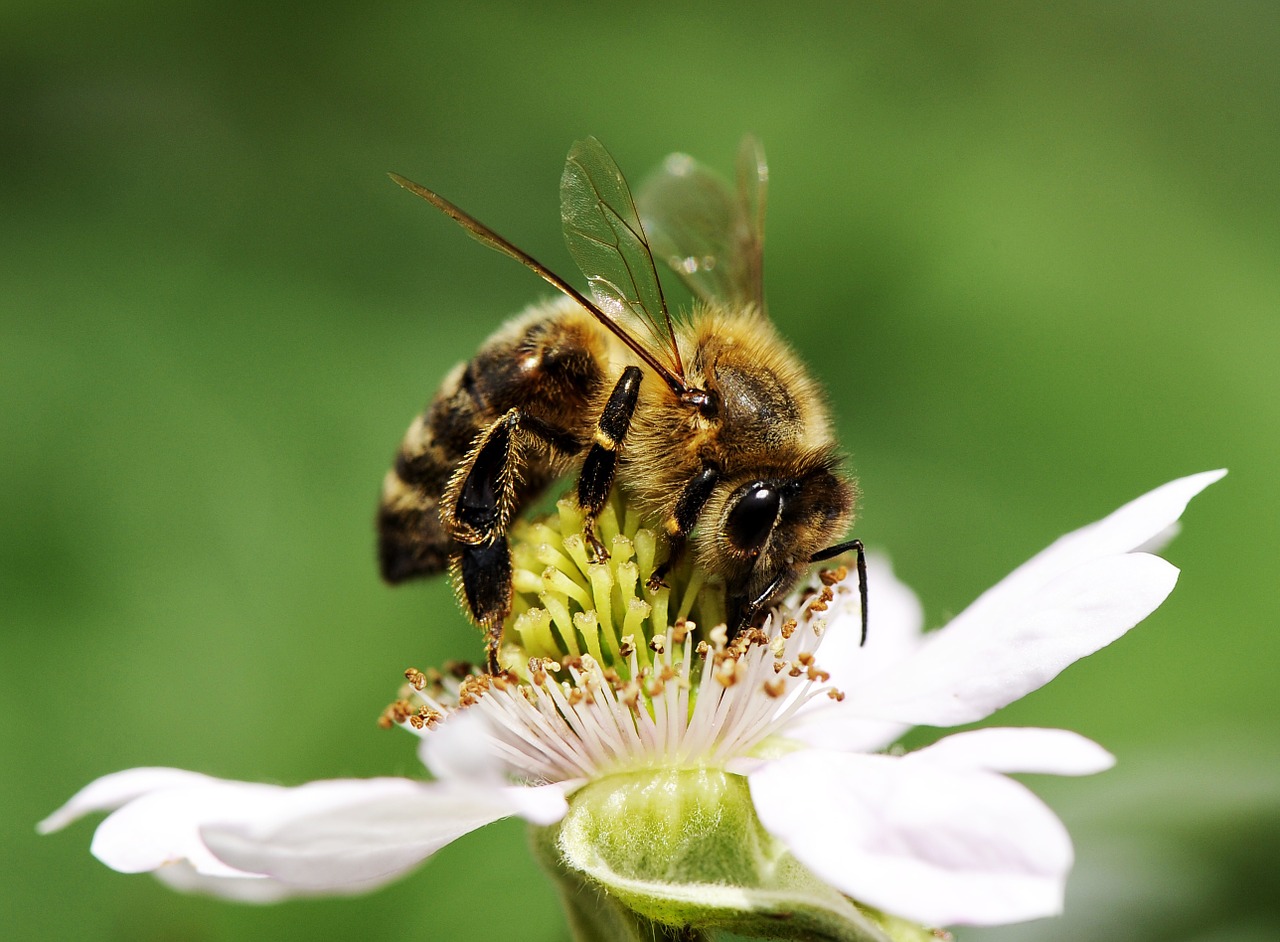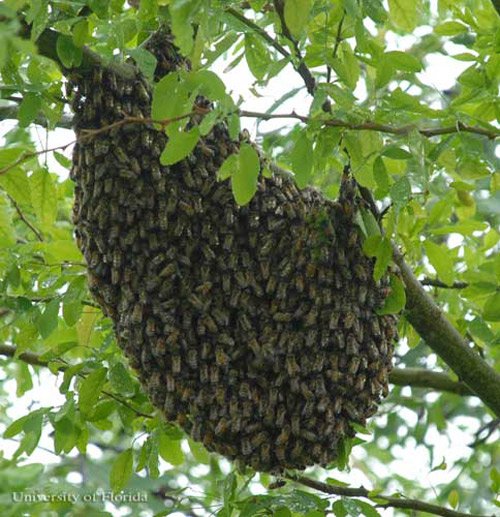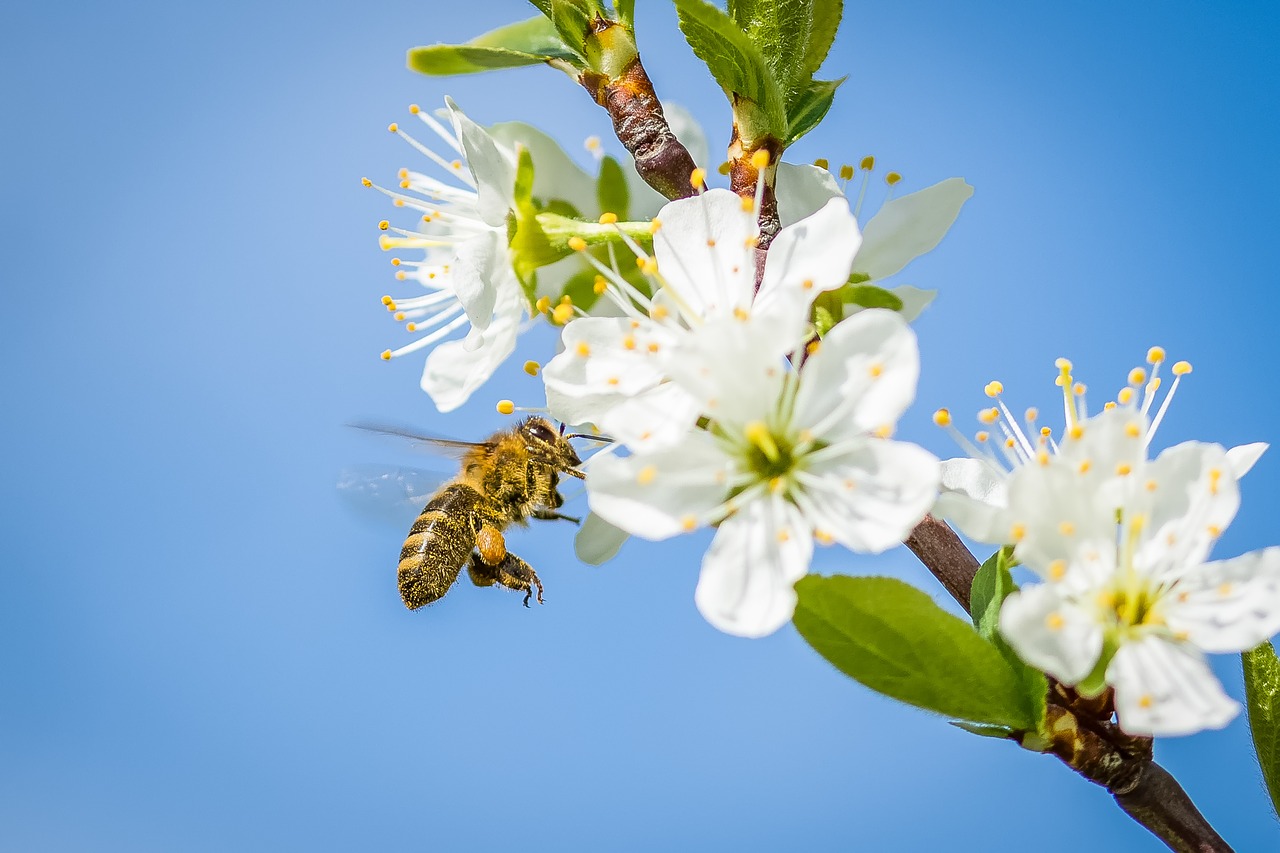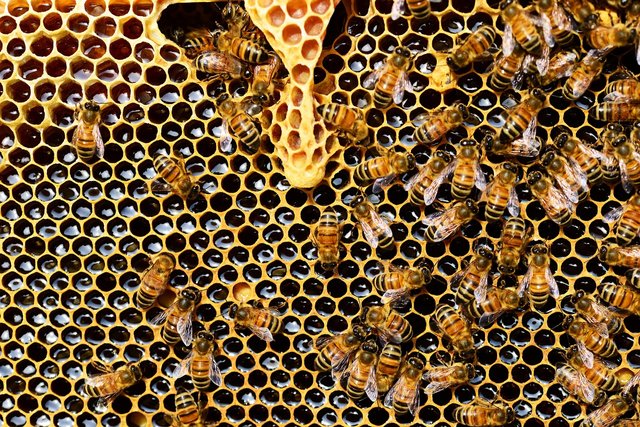THE BEAUTY OF AFRICAN HONEY BEE

Honey bees, like any different living insects, range among themselves in qualities equivalent to temperament, disease resistance, and productivity. The environment has a big outcome on differences amongst bee colonies (for example, vegetation in one-of-a-kind areas yield exclusive honey crops), but the genetic make-up of a colony may additionally have an impact on the characteristics that outline a distinctive workforce. Beekeepers have lengthy recognized that extraordinary genetic stocks have unique characteristics, so they've utilized specific strains to suit their detailed purpose, whether or not it be pollination, a honey crop, or bee creation.
There are different species of honey bee with different features. Honey bees are the real producer of inorganic (raw) honey found world wide. Some of the honey bee varieties are:
Apis mellifera (European or Western honey bee), Apis mellifera mellifera (Northern European or German honey bee), Apis mellifera ligustica (Italian honey bee), Apis mellifera carnica (carneolan or grey bee), Apis mellifera macedonica (Macedonian bee), Apis mellifera scutellata (African honey bee) etc.
All of these bees are natural honey producer but for the purpose of this writing, I will be focusing strictly on African Honey Bee (Apis mellifera scutellata). You will learn what makes it unique from other bees, it's appearance, behavior, importance and lots more.
Entomologist Charles A. Whitfield lead the research team that says: "Every honey bee alive today had a common ancestor in Africa" is one conclusion drawn by a team of scientists that probed the origin of the species and the movements of introduced populations, including African "killer" bees in the New World" by Charles A. Whitfield
.jpeg) Routes of the African Honeybee
Routes of the African Honeybee
Research shows that the honey bee, Apis mellifera, originated in Africa and spread into Europe by at least two ancient migrations," mentioned Charles W. Whitfield, a professor of entomology on the school of Illinois at Urbana-Champaign who is the lead creator of a paper to show up in the Oct. 27 hassle of the journal Science.
"The migrations resulted in two European populations which can be geographically shut, but genetically quite one of a kind," Whitfield said. "correctly, the 2 European populations are more related to honey bees in Africa than to each other."
To discover the actions of bee populations, the researchers used simple variants in DNA known as SNP (single nucleotide polymorphism) markers. "An SNP marker can inform you numerous about which bee is regarding which bee, and where a specific bee got here from," said Whitfield, who can be an affiliate of the Institute for Genomic Biology on the U. Of I.
While previous reviews relied upon a handful of markers, Whitfield and his collaborators used the not too long ago sequenced honey bee genome to locate and compare 1,136 markers. The sizeable expand in markers supplied a stage of element certainly not earlier than possible within the genetic analysis of honey bees.
The genus Apis consists of 10 species, nine of which might be limited to Asia. The one exception, A. Mellifera, is disbursed from sub-Saharan Africa to imperative Asia to Northern Europe, and has greater than two dozen precise geographical subspecies.
Within the New World, introductions of the western and northern European subspecies A. Mellifera mellifera began in North the us as early as 1622. This used to be followed via introductions of as a minimum eight further subspecies from one of a kind components of Europe, the near East and northern Africa.
In 1956, a subspecies from the savannahs of Africa, A. M. Scutellata, was once presented to Brazil in an try to broaden honey construction. The afterbear of those African honey bees quickly unfold northward and southward from Brazil, hybridizing with and displacing previously introduced European honey bees.
"Clearly, these African 'killer' bees are extra aggressive and show off different qualities that beekeepers and bee breeders dislike," Whitfield stated. "by way of finding out variation in the honey bee genome, we cannot best display the movement of these bees, we will also establish the genes that motive the versions -- and that will enable us to raised understand the diversities."
.jpeg) African honeybee body features
African honeybee body features
African honey bees can not be distinguished from European honey bees with ease, even though they're somewhat smaller than the more than a few European races. Laboratory personnel use morphometric analyses to examine the possibility that a given colony is Africanized or absolutely African. Differentiation was by the measurement of wing venation patterns and the size and coloration of quite a lot of body materials (morphometry) are main determinants of identification on the subspecific level.
You can easily identify African honeybee by their attributed yellow-striped abdomen, slightly smaller; the common body length of an adult bee worker is 19 mm. Its upper physique is protected in short, fine hair and its abdomen is striped with black.
 African honeybee swarm on the tree
African honeybee swarm on the tree
The African honeybee can be seen in the natural veld of South Africa (besides the Western Cape and some parts of the eastern Cape) and valuable Africa. Some plants like sunflowers or subtropical fruit are essential forage assets for managed honeybee colonies and beekeepers almost always entice wild swarms in these areas. Managed honeybees can abscond from hives to end up wild once more, and as a result the wild and managed honeybees are all associated.
.jpeg) African Honeybee pollinating flower
African Honeybee pollinating flower
Honeybees forage on nectar (carbohydrates) and pollen (protein) of flowering plants, and they require a significant variety of pollen and nectar from unique plant sources to be healthful. At the same time some beekeepers could complement a colony's food with sugary water, this is not an extended-time period or healthful option. African honeybee beekeepers use a style of plant species (together with indigenous vegetation, vegetation and weeds) as forage assets for their bees.
The indigenous African bee bite or sting isn't any more toxic than other bee stings, though African honeybees are quick to respond to any form of disturbances than European honey bee types. They ship out three to 4 times as many staff according to a hazard. They will also pursue an outsider for a larger distance from the hive. Even though individuals have died as a consequence of 100-300 stings, it has been estimated that the traditional lethal dose for an adult is 500-1100 bee stings. Industrially, it can produce more than other bees.
Before honey can be available for sale or use, it has to go through some stages:
Honey begins as flower nectar accumulated by means of bees, which will get broken down into simple sugars stored within the honeycomb. The design of the honeycomb and consistent fanning of the bees' wings causes evaporation, creating candy liquid honey. Honey's colour and flavor varies based on the nectar amassed by using the bees. For instance, honey created from orange blossom nectar perhaps mild in colour, whereas honey from avocado or wildflowers could have a gloomy amber color.
On yearly basis a hive can produce about 65 pounds of honey. Beekeepers harvest it by way of accumulating the honeycomb frames and scraping off the wax cap that bees make to seal off honey in every cell. As soon as the caps are removed, the frames are positioned in an extractor, a centrifuge that spins the frames, forcing honey out of the comb.
After the honey is extracted, it's strained to take away any remaining wax and different particles. Some beekeepers and bottlers would warmth the honey to make this process less difficult, but that does not alter the liquid's normal composition.
After straining, it is it's finally ready for use or sale
 Honey bee pollination
Honey bee pollination
 Honey bee hive
Honey bee hive
These bees hate to be disturbed. They don't want to know if you are ignorant of their habitat policy. Here are some facts about them:
- Killer bees aren't too big. They're like ¾ inches of a normal bees.
- Killer bees have four pairs of wings, but they can't really fly like European honey bee specie.
- They're equipped to chase their victims at least for a quarter of the mile.
- Killer bees reside in huge colonies that include up to eighty thousand members.
- Killer bees can observe strange odour.
- Killer bees produce venom that is as powerfulas the venom produced by using European bees.
- killer bees at all times attack in a bunch, making victim suffer different stings.
- In just three seconds, African honey bee can sting Victims.
- Once they sting prey, they releases the pigments that smells like ripe banana. The pigment is a general call for attack.
- Killer bee stays agitated 24 hours after the attack.
- They simply produce 5 time less honey than European bees.
- African honey bee (queens) can live up to one or a few years.
- Worker bees reside round one month
- Drones (male) usually reside from 5 to 10 weeks.
Africans are lovers of honey, it's place in the continent can not just be overemphasized. They use it for health, preservative and beauty purposes.
Do you like honey???
What do you learn newly???
Reference:
African Honey Bee
Honey Spp. Barnsley beekeepers

.jpeg)
Didn't know different nectar from different flowers determine the quality and colour of honey
Due to their aggressive nature, aren't they a threat to other bee species, especially in the Americas and Europe?
I wish more empowernment/training be given to this modern/jet age Entrepreneurs towards Honey production. Yeah. May honey production not be a thing of the past because the rate of the production now is not common compared to in the past about 2 centuries ago. Honey is so useful in many aspects. Its medicinal too. Thank you @africaunchained for this awakening and enlightenment.
Wow,just learnt more about bees, real informative, pls check put this post below
https://steemit.com/photography/@macx56/prey-page-2